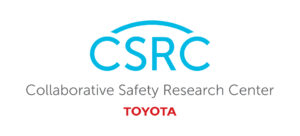
Toyota’s CSRC completes 100th project with MIT, announces 10 new projects
By onEducation | Technology
Toyota’s Collaborative Safety Research Center (CSRC) announced Tuesday the completion of its 100th research collaboration with the Massachusetts Institute of Technology (MIT) AgeLab, along with new partnerships and 10 new projects.
The project characterized non-driving-related tasks during highway driving, with or without driver assistance technologies, according to a release.
The latest projects from CSRC and MIT build on collaborative research, including the use of novel real-world driving datasets collected from urban and suburban settings to explore the behaviors of drivers and pedestrians. The researchers analyze data collected as drivers interact with one another, their vehicles, and items inside their vehicles, like mobile phones.
Other projects completed through the collaboration include:
-
- “Voice-based human-machine interaction: Identified relevant aspects of voice-based infotainment systems to help mitigate their cognitive and visual demands in studies with volunteers in vehicles on-road.
- “Toyota helped launch the MIT AgeLab’s Advanced Vehicle Technologies (AVT) Consortium for the study of driver assistance systems as a founding member.
- “Created a dataset of driver-pedestrian interaction: Produced a comprehensive dataset of 348 naturalistic interactions to study the implications for traffic safety. Analysis identified the importance of motion cues as non-verbal communication between drivers and pedestrians to help avoid potential crashes. This dataset has also helped the International Organization for Standardization (ISO) create new ergonomic design guidance for external visual communication from automated vehicles to other road users.
- “Analyzed characteristics of non-driving-related tasks: Annotated approximately 450 hours of driving data to identify over 154 hours of engagement in non-driving-related tasks (NDRT) — e.g., mobile phone use, texting, talking to passenger, using the infotainment system, eating and drinking — to evaluate the influence that driving assist technology can have on the decision to engage in NDRT. Analysis revealed that drivers’ choice to participate in NDRTs is nuanced and varies based on the road type and several aspects of driver support features.
- “Driver assistance systems and behavior: Developed a dataset of more than 1000 highway driving trips to analyze complex interplay between lane centering performance, driver management systems, and individual driver behavior, which is ongoing.”
CSRC also announced new collaborations with Oregon State University, Ohio State University Injury Biomechanics Research Center, University of Waterloo, and Auburn University, as well as 10 new projects.
The projects include:
-
- Analysis of speed assist implementations and context-aware improvements with Touchstone Evaluations, Inc: How do crash typologies, context, and driver profiles relate to the effectiveness of speeding countermeasures (e.g., expected crash reduction, driver acceptance, and behavioral modification)?
- Driver behavior adaptation to L2 automation with MIT AgeLab: How do different implementations of L2 driving automation and driver monitoring system (DMS) interact with context to shape driver behavior?
- Evaluating driving performance and behavior across varying vehicle specifications and driving contexts with Virginia Tech Transportation Institute: How do vehicle features, advanced driver assistance systems (ADAS), and other technologies affect driving behavior, like risky driving, in various driving situations (such as weather and road type)?
- Safety benefits of in-vehicle alerts and notifications with Oregon State University: Which safety-critical areas can benefit the most from in-vehicle alerts? Do alerts in those situations improve safety?
- User acceptance factors for in-vehicle safety systems targeting impaired driving with Impact Research LLC: What is the threshold of the driver’s acceptance of pre-drive interacting with driver monitoring systems?
- Comparing the applicability of global ADAS testing scenarios in the U.S. context with the University of Michigan Transportation Research Institute.
- Skeletal data for anthropometry and posture with the University of Michigan Transportation Research Institute: Can future crash simulations be enhanced by understanding the relationship between bone geometry and external posture and shape while driving?
- Biological sex in ankle bone material properties with the Ohio State University Injury Biomechanics Research Center and University of Waterloo: How to improve lower extremity injury prediction by considering biological sex-related internal geometry differences in material modeling.
- Pedestrian protection in high hood vehicles with the University of Virginia Center for Applied Biomechanics: What design features of truck frontal geometry could enhance pedestrian protection?
- Interacting while driving: Evaluating attentional demands of in-vehicle interfaces with Auburn University: How does the integration of different functions (e.g., infotainment, navigation) and control types (e.g., touchscreen, physical controls, or combinations) within in-vehicle HMIs influence driver distraction and driving performance?
“These projects are added to several ongoing research activities previously announced and represent important research questions that CSRC will continue exploring in its current five-year research phase that is focused on better understanding driver behavior, crash avoidance, and crash injury mitigation,” the release says.
CSRC was created in 2011 to advance safety in the industry, according to the release. Results from CSRC are published and openly presented for others to utilize and benefit from.
More than 400 students, postdoctoral fellows, and research staff from collaborating institutions have participated in CSRC projects, according to the release.
“Several of these former trainees have gone on to help advance traffic safety through roles in academia, other OEMs, tech companies, and safety stakeholders,” the release says.
Images
CSRC logo courtesy of CSRC.
